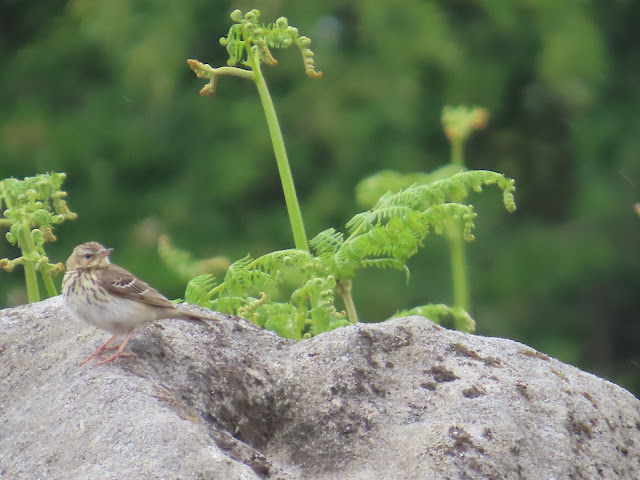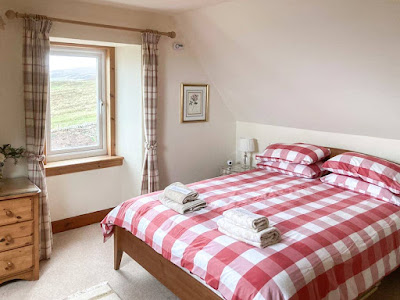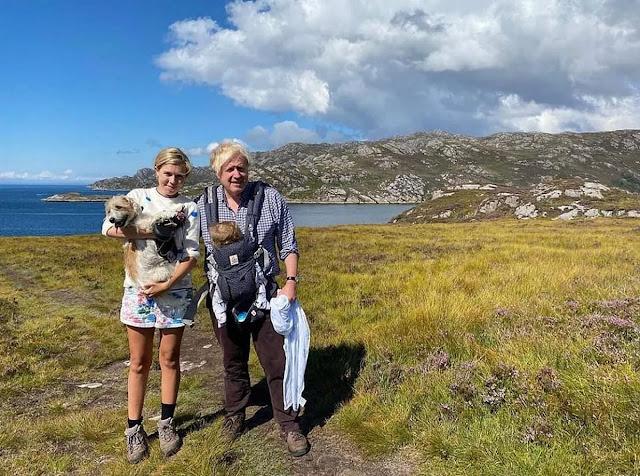The Spotted Flycatcher is readily distinguished from other little birds by its peculiar manners, and, when once pointed out, cannot be again mistaken.
It sits, when on the watch for food, in the outer spray of a tree or, more commonly, on a wall or on the top of the palings of a park, and every now and then descends from its station upon a passing insect, and then regains its former place.
If followed, it flits along before its pursuer, alighting again and again on the wall or palings a little way in advance of him, and often admitting of a very near approach.
It is one of the least shy of our summer birds and builds commonly in gardens in situations similar to those chosen by the redbreast, and on the walls of houses where fruit-trees, or other climbing shrubs, are trained, placing its mossy nest in an angle formed by the branches.
Flycatchers are said to rear but one brood in the year which is very probably the truth as their arrival in England is later than that of most summer migrants.
However, we have known an instance, where the first nest and eggs having been taken away, of a second and a third being placed in the same locality where a brick had been displaced in an old wall.
They are believed, also, to return to the same spot for incubation year after year, provided the locality is a permanent one such as the place just mentioned.
The Spotted Flycatcher, although the most silent of our summer visitors, is not one of the least interesting.
It makes its appearance in England the middle or latter part of May, and young broods are fledged about the middle of the succeeding month.
Three young Flycatchers were brought us, which had been taken from a nest in an adjoining garden.
We placed them in a large cage in which were several other little birds of different species.
Their entrance was immediately hailed with great delight by a Robin, who, with many lively attitudes and gestures, uttered frequently his note of surprise, crackrrrack!
The little Flycatchers, which were still in the plumage of young nestlings, namely, mottled with grey, white, and brown and tailless, mounted themselves on one of the uppermost perches, where they sat quietly side by side.
After they had been some time in the cage, a sudden stir was observed among them, and a bird hastily entered the window near which the cage was placed, alighted upon it, and as hastily retreated.
In the course of a few minutes this was repeated, and it proved to be one of the parent birds whose affection had traced the little ones to their place of imprisonment and who was now supplying them with food.
We were highly delighted at this circumstance as it promised a supply of proper food for the nestlings such as we could not ourselves have provided.
We had now only to take the precaution of having the window constantly open during the day to admit the visits of this interesting little creature who continued, day after day, to supply the young ones with food, notwithstanding the interruptions that might be supposed to be caused by a large family passing continually in and out, as the cage stood in the drawing-room.
Apparently, the task of feeding the nestlings was performed by one alone, probably the female, as only one bird entered the room, while her mate, who accompanied her constantly in her flight, always waited for her outside the window, either upon the roof of the house or on a neighbouring tree.
The young ones usually appeared aware of the approach of the parent, and were on the alert, and eager to receive the expected food, some seconds before the appearance of the bird, although we could perceive no sound that acquainted us of her approach.
As before mentioned, the little nestlings sat upon an upper perch, but were not always near enough to the wires of the cage to be within reach of the parent when she appeared with food, which circumstance afforded an opportunity for a display of sagacity on the part of the Robin before mentioned, which we could not have credited if we had not seen it.
This little creature, who had for some time been an inhabitant of the cage, where he lived in perfect harmony with all his associates, had from the first shown great interest in the little Flycatchers, and now, perceiving that the nestlings could not reach the offered food, but sat with their wings fluttering, and their mouths open, anxious to obtain it, flew to the wires, received the insects from the mother bird, and put them into the open mouths of the nestlings.
This curious action was witnessed by ourselves and several friends, and occurred not once only, but was repeated every succeeding day as often as his services were required.
He seemed as watchful for the return of the parent Flycatcher as the little ones themselves, and always ready to act the part of carrier when necessary, but, when he saw that his assistance was not wanted, he quietly looked on.
The food brought by the Flycatcher consisted generally, as far as we could judge, of honey-bees, living, struggling bees.
Sometimes two or three were brought at once and transferred, still alive and struggling, to the mouths of the little ones by whom they were eagerly swallowed.
On two or three occasions, the Robin was observed, on receiving the bee from the Flycatcher, to pause with it in his beak, as if in a fit of absence, and then to swallow it himself, but, to his honour be it spoken, this was not observed to take place more than two or three times, whereas his transfer of the insect from the parent to the little ones was witnessed hundreds of times.
The young Flycatchers were never seen to make any attempt at feeding themselves, nor did the Robin give them any of his own food, namely, the German paste or worms with which the cage was constantly supplied.
Neither do we remember that the little birds were ever seen to drink from the water fountain.
They usually remained upon a perch, side by side, and at night nestled close together, with the Robin beside them. |
For more than six weeks, the parent Flycatchers continued to attend the little ones, from four or five o’clock in the morning, at which time the window was purposely opened until nearly dark in the evening.
The redbreast also remained unremitting in his attention to them, until the accidental death of one of the little brood induced us to give the two others their liberty, fearing that, if we kept them longer, they would not become sufficiently able to provide for themselves before the period of their migration, and so be left to perish.
It is a question of some curiosity whether the bees with which this little family was fed were really honey-bees, as they appeared to be, and we afterwards regretted that we had not ascertained the fact by intercepting one of them and examining it.
That they were alive and entire there is no doubt, and that they were swallowed also in that state is certain.
Our belief that they were really honey-bees is strengthened by the animosity of cottagers towards this little bird which has universally the credit of visiting their bee stalls and purloining the bees from the door of the hive.
Another corroborating circumstance in favour of their being honey-bees is that Flycatchers abound in places where lime trees are numerous which trees are much visited by those insects as we have observed, in some of the most wooded parts of Surrey where the lime and the Flycatcher are equally abundant.
In Surrey, also, the name of 'Bee-bird' is commonly applied to this species.
 |
Above and below, it seems this Flycatcher, photographed in September, has caught not a bee but a wasp |
















































